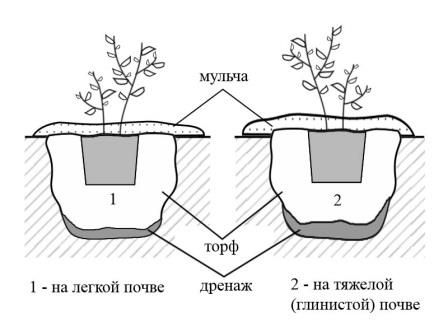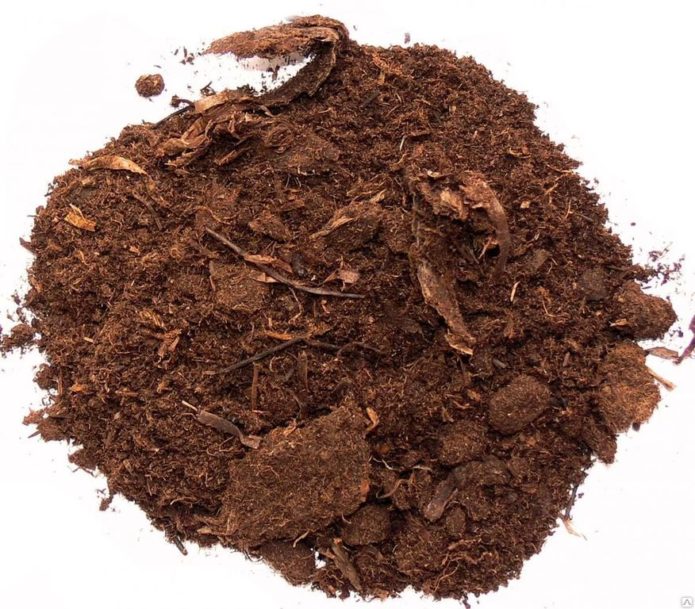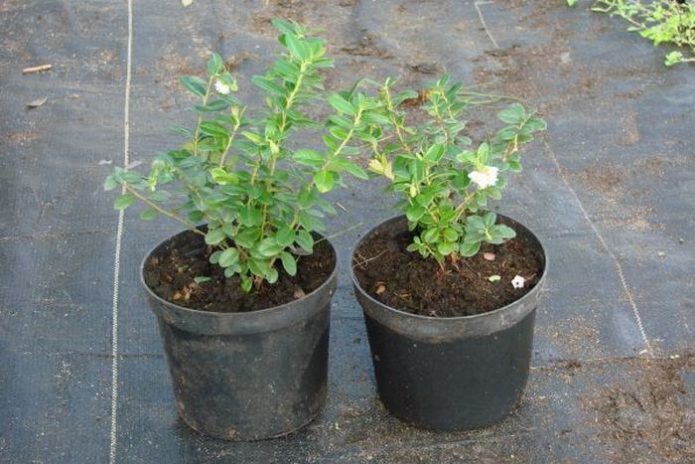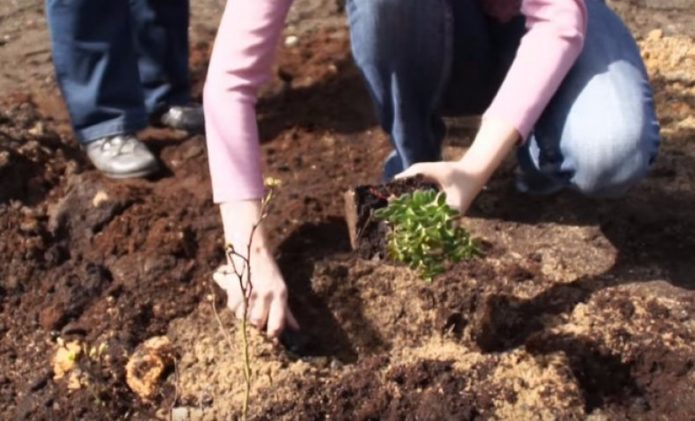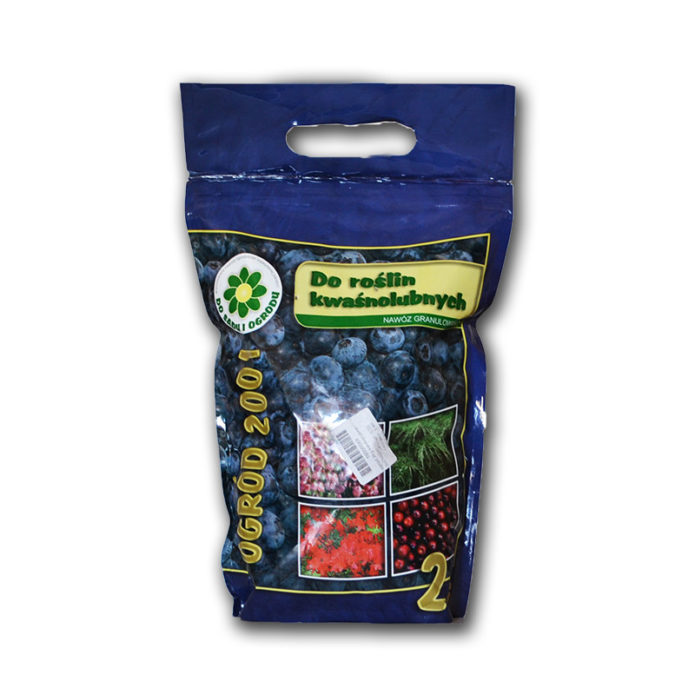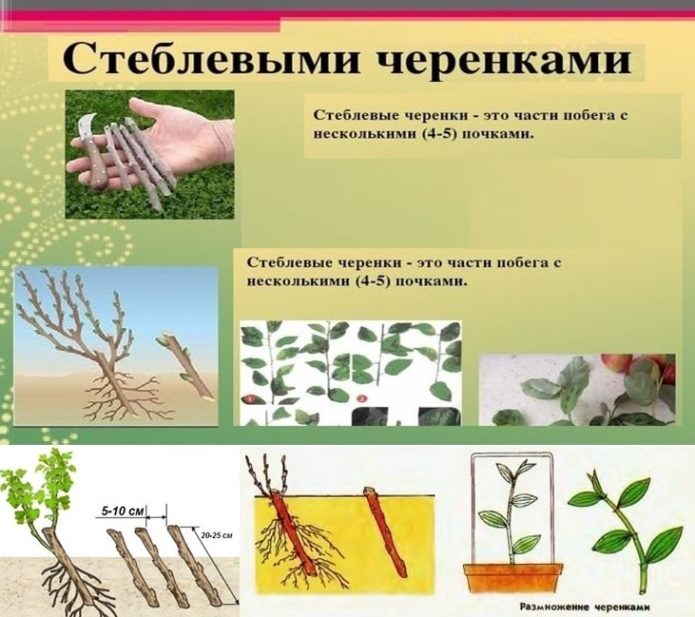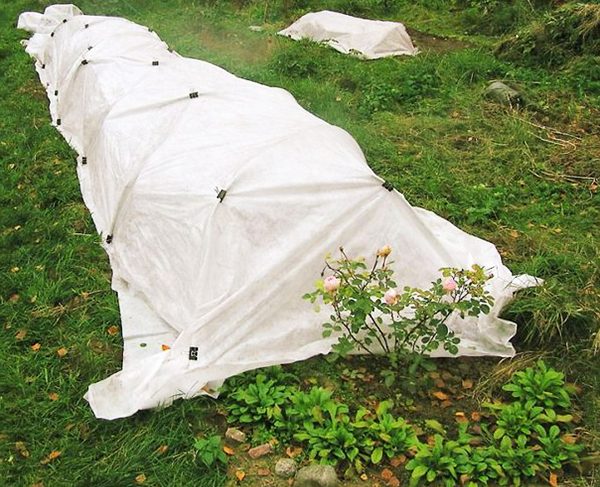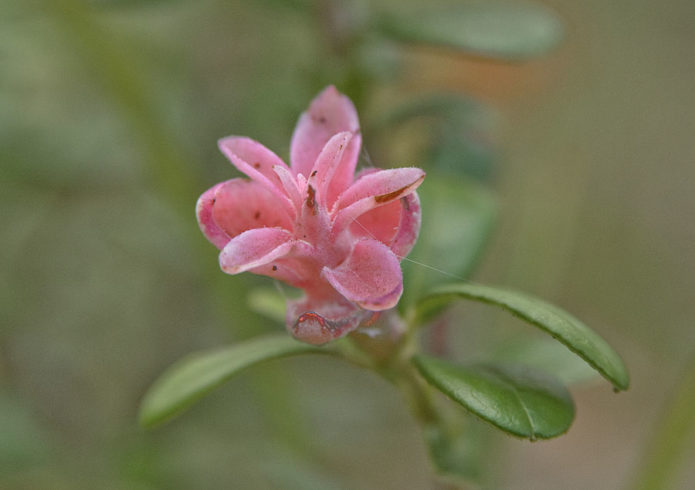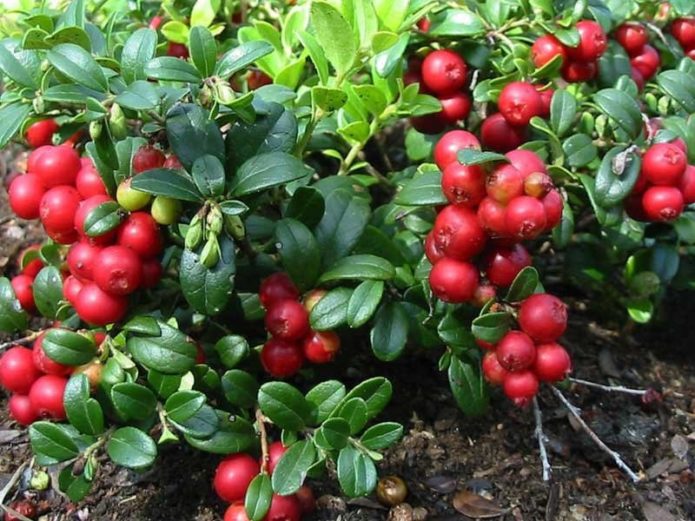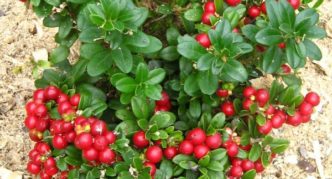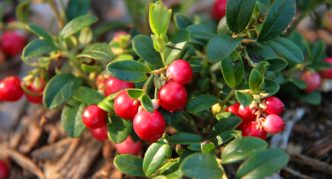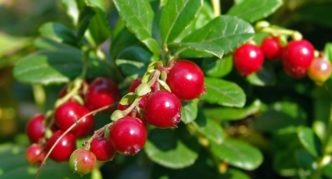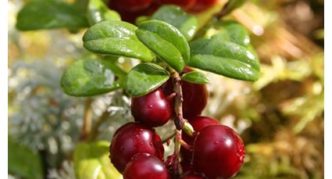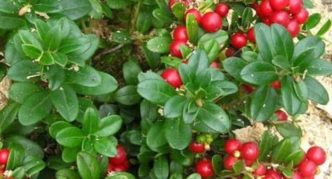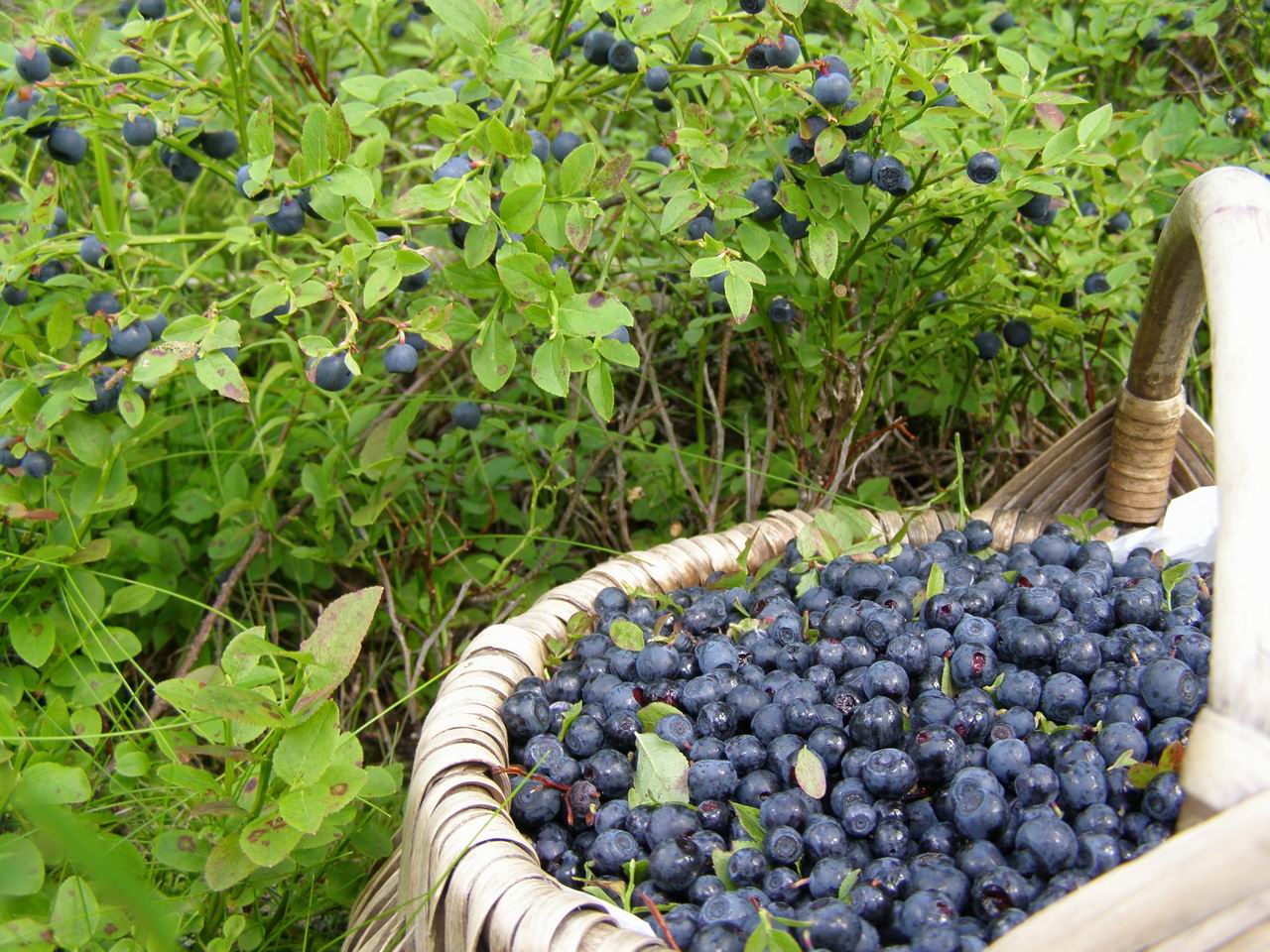It turns out that such a common shrub growing in swamps, like lingonberry, has now appeared in garden plots. Let's try to figure out how to properly plant and grow lingonberries in order to please ourselves and our loved ones with its harvest.
Content
We invite lingonberries for permanent residence
It is known that in nature, lingonberry likes to grow in places with high soil acidity: on peatlands, in pine forests, in marshy lowlands. This knowledge will help you choose the right place and prepare the soil for planting garden lingonberries.
Choosing a landing site
When planting lingonberries, a number of points should be taken into account:
- the site must be protected from the wind;
- bushes are best planted on the sunny side;
- it is good to plant lingonberries near a reservoir, but without nearby groundwater.
Prepare the soil with a high acidity level. If the soil on the site is clay or black earth, you need to remove the top layer 25 cm high and in its place add a mixture of high peat, sawdust and river sand in equal proportions with the addition of mineral fertilizers (3 g of ammonium nitrate, 3 g of double superphosphate and 10 g of potassium sulfate 1 m2 landings).
For acidification, a solution of citric or oxalic acid is used (a tablespoon per 3 liters of water), which is shed with soil at the rate of 1 liter per 1 m2, or 200 ml of 9% vinegar in a bucket of water.
We plant correctly
Lingonberries are planted on the site in September-October or in spring (before the start of shoot growth). One-year and two-year seedlings are suitable as planting material. You can buy them or get them yourself by rooting green cuttings (the ends of leafy shoots) in the greenhouse.
Before planting, the roots of the seedlings should be soaked in a weak solution of potassium permanganate for disinfection. If lingonberries (two-year-old seedlings) were grown in a container, they can be planted in any growing season without soaking the roots.
The procedure is as follows:
- Plants are placed on the garden bed according to the scheme 30 × 30 cm.The distance between the rows is 50 cm.
- The seedlings are buried in the ground by 2.5–3 cm. The roots should be free in the hole.
- Then the hole is covered with soil, watered and mulched. It is good to use sawdust or crushed bark as mulch.
Immediately after planting, the seedlings are covered with non-woven material, which is removed after they are completely rooted (after about 2 weeks). This is done then to improve survival and protect the planting from frost. Shelter is also required for adult plants during possible frosts. They are especially dangerous in the spring, when the first buds of lingonberries appear, and in early autumn, when the flower buds of the new crop are laid.
Planting care rules
After planting, the seedlings are provided with sufficient care so that the lingonberry will delight with the harvest. Throughout the season, it is required to periodically weed the weeds, loosen the soil around the plants, after loosening, mulch with fresh sawdust for acidification.
Watering lingonberries
Water the lingonberries twice a week during the entire fruiting period. Watering is carried out with shallow sprinkling. It should be sufficient, but not create waterlogging. When the air humidity is below 50% of the planting, it is advisable to water daily at the rate of 10 liters per 25 m2 in evening time. Adequate watering during the period of ovary formation contributes to a higher yield and larger berry size.
Lingonberry loves the sun, so plantings should not be shaded. Abundant fruiting can be expected 3-4 years after planting in a permanent place.
Top dressing lingonberry
Lingonberries growing wild on poor soils do not like generous fertilizing. In the spring, after the snow melts, it is enough to add (based on one hundred square meters):
- ammonium sulfate - 0.5 kg;
- potassium sulfate - 1 kg;
- superphosphate - 1.8 kg.
Shortly before flowering, you can repeat feeding with ammonium sulfate in the same dose. It is useful to periodically feed the plants with Ogrod 2001 complex fertilizer, created specifically for heather crops. A successful combination of dressing with sand mulching.
Lingonberry has an interesting feature: its roots are entangled with fungal mycelium, which absorbs minerals from the soil and partially transfers them to the plant.
Rejuvenation of plantings
Lingonberry is a perennial plant, and therefore it requires periodic rejuvenation. Starting from the 7-8th year, pruning should be carried out in order to rejuvenate the plantings. To do this, the bushes are cut in early spring at a height of 4–6 cm, while keeping at least 4 leaves on the hemp. Cut cuttings are used as planting material. And the rejuvenation of plants will make it possible to increase productivity again in a year.
Lingonberry propagation
It is better to propagate lingonberries by cuttings. For this:
- In spring (April) or autumn cuttings 4–5 cm long with several leaves are cut from the mother plant.
- The apical bud is cut off from each cutting.
- Prepared cuttings are planted in a substrate consisting of 2 parts of peat and 1 part of sand.
- A 3 cm depression is made in the substrate, and a cutting is planted in it. The distance between the cuttings is 5–6 cm.
- The soil around is compacted and watered.
- The plantings are covered with a film, and from above with a covering material - until the threat of frost disappears.
Thus, you can make cuttings in the open field, but it is better to do this in a greenhouse, since it is easier to maintain the temperature and humidity necessary for the seedlings in it.
After two years, grown and matured plants are transplanted to a permanent place.
Video: cuttings of lingonberry
Protection against diseases and pests
Among the pests of lingonberry, one can distinguish leafworm caterpillars, which usually emerge from eggs in late April – early May. Caterpillars actively eat buds and buds, and can also damage young leaves and ovaries. To avoid their appearance, you can try to scare away butterflies that lay eggs by spraying the plantings with broths with an unpleasant smell: garlic, onions, wormwood. If the caterpillars have already appeared, they should be treated with insecticides ("Karate", "Decis", etc.). Treatment with a 1% solution of Bordeaux liquid will also protect plants from gray mold.
Of fungal diseases, lingonberries are characterized by:
- berry exobasidiosis - the leaves turn pink, a whitish bloom of spores is visible on them. 3-4 treatments are carried out with a 1% solution of Bordeaux liquid:
- first - before flowering,
- the second - at the end of flowering,
- the third - after 2-3 weeks. The 4th treatment is also possible if necessary;
- sclerotinia (white rot) - berries are mummified. 2-3 treatments are carried out with Bordeaux liquid before flowering and with 0.2% Zuparen solution (3 sprays at intervals of a week before flowering);
- rust - the leaves are covered with dark brown spots. Treatment with Bordeaux liquid is carried out in the spring before flowering and in the fall after harvest. All fallen leaves are burned.
Growing area
Most often, lingonberries are grown in regions with natural acidity in peat soil. The more humid northern slopes are suitable for this berry.
The difference in agricultural technology in different climatic zones will be due to the fact that in places with a warmer climate, lingonberries will not be threatened by low temperatures, planting will not require shelter. In places with a harsher climate, shelter is required during the spring and autumn frosts, otherwise part of the harvest may be lost.
Different regions have their own characteristics of lingonberry agricultural technology:
- lingonberry bears fruit well in the Far East. The yield here can be up to 2 tons per hectare per year;
- in the Urals, the wild-growing Kondinskaya lingonberry, collected in the Kondinsky forests, is widely known, but garden lingonberries are practically not grown here;
- in Ukraine, lingonberry is unpopular, perhaps this is due to the high fertility of the soil and the need for frequent watering;
- in Central Russia and the Moscow Region, the lingonberry will have enough heat and light to give a crop twice a season.
Varieties of garden lingonberry
Lingonberry breeding is carried out in Holland, Germany, Finland. Only three varieties are registered in the State Register of Breeding Achievements of Russia (Kostromichka, Rubin and Kostromskaya rozovaya). Therefore, we also grow many varieties of foreign selection.
Photo gallery: varieties of garden lingonberry
- The Sanna lingonberry variety, which is native to Sweden, is very branchy
- Dutch lingonberry variety Coral is considered to be very productive
- Suzy is a Swedish cultivar of garden lingonberry
- Lingonberry variety Kostromichka is a selection achievement of the Russian Federation registered in the State Register
- Russian lingonberry variety Rubin can withstand frosts down to -30 ° C
Table: varieties of garden lingonberries
| Variety name | Country of selection | Features of the variety |
| Coral (Koralle) | Holland | It is considered the most productive variety, it is characterized by a spherical compact crown, which gives the bush a decorative effect. The crop gives twice a year. Productivity - 300-400 g per bush |
| Red perl | Holland | Early ripe. Plants 25 cm high, berries are bright red, rounded; bears fruit twice a season. Productivity - 200-250 g per bush |
| Susie (Sussi) | Sweden | Stunted, frost-resistant, medium ripening. Does not need pollination |
| Sanna | Sweden | Height - 15-30 cm, characteristic branching, splendor of the bush. Medium-yielding, berry weight - 0.4 g, up to 300 g from a bush can be harvested per season |
| Fleece belyavskoe | Poland | Early ripe, high-yielding, up to 350 g from one bush |
| Ruby | Russia | Frost-resistant variety, able to withstand –30 ° C, bright red berries, late harvest. Refers to light-loving varieties. The first harvest will give 4 years after planting |
Lingonberry is an unusually useful shrub. On the site, it looks very decorative and pleases the eye with its shiny leaves, white flowers and red berries. Both leaves and berries are used as a medicine. If there is no way to get them in nature, you can try to settle the plant in your own garden.
